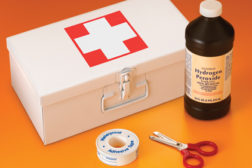Workplace Health
Injuries can happen quickly - over over time
Read More
5 ways exercise helps men live longer and better
It only takes a few basic lifestyle changes to lower the chances of getting many age-related diseases
April 30, 2013
WTC first responders have more health problems than general population
Study finds asthma, PTSD, depression common
April 25, 2013
Treating sleep apnea improves worker productivity
Patients who followed treatment program saw results
April 19, 2013
Public health experts unhappy with Obama’s budget proposal
Cuts come “at the expense of our nation’s health”
April 17, 2013
Lead exposure in older homes means children “pay with their lives”
Q&A: Authors say toll from the toxic metal still plagues U.S.
April 12, 2013
Never miss the latest news and trends driving the safety industry
eNewsletter | Website | eMagazine
JOIN TODAYCopyright ©2024. All Rights Reserved BNP Media.
Design, CMS, Hosting & Web Development :: ePublishing









